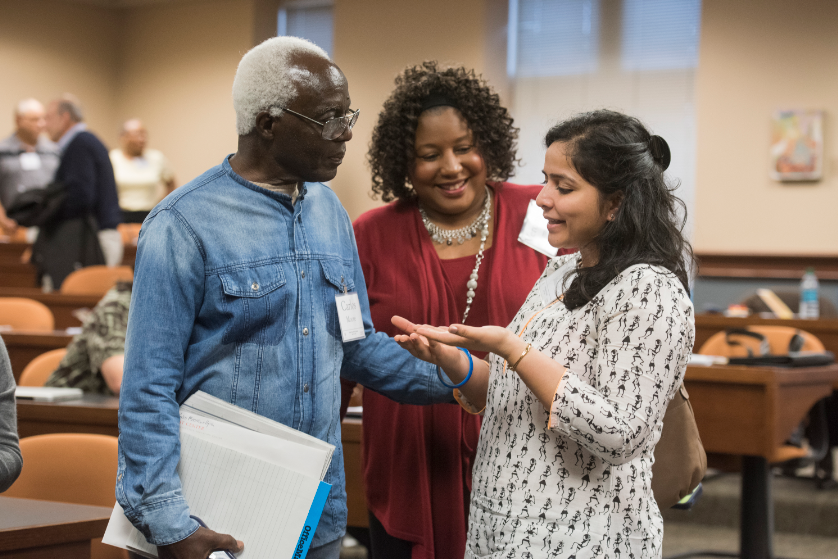By: Neha Mishra, M.S. Ramaiah College of Law
The two day Colorism Conference, hosted jointly by Washington University School of Law and Harris World Law Institute, established beyond a reasonable doubt that the problem of skin colour prejudice is prevalent all across the globe. The definitive terms may differ and range from Colorism or Shadeism resulting in the Bleaching Syndrome or just euphemistic ‘preference’ hiding the deep rooted desire for lighter skin.
What struck me most during the conference was that it wasn’t restricted to just legal academia debating within their own circles about the statutes and regulations, but rather went far beyond the expected with the inclusion of societal representatives and social scientists. I observed heavy participation from school teachers (primary and higher), students and administrators, who were more sensitized about the depth and manifestation of this grave issue; I am hopeful that they can serve as a first tier mechanism to combat colorism and that such discussions can be percolated through them to their institutions, friends and family.

Neha Mishra, M.S. Ramaiah College of Law, discusses the history of colorism with Dr. Carlos Moore, writer, researcher and social scientist, and a member of the audience between panels
The law can protect in so far as it relates to the right to equality and right against discrimination on the basis of colour; both of these rights are complementary to each other and include positive as well as negative obligations. Though the International Covenant on Civil and Political Rights (ICCPR) itself does not provide a definition of discrimination, the Human Rights Committee in its General Comment 18 on Non-Discrimination provides an explanation, stating “the term “discrimination” as used in the Covenant should be understood to imply any distinction, exclusion, restriction or preference which is based on any ground such as race, colour, sex, language…” That implies, in the case of an occurrence of any ‘discrimination’ based on colour (such as, for example, during school admissions, cases of employment, etc.) that one can seek redress from the court of law. But the problem is that in most cases the ‘exclusion’ on the basis of colour which impacts and permeates the day-to-day lives and choices of people, consequently usually doesn’t form the basis of an actionable claim in the eyes of law. For example, females choosing to bleach their skin, even in the face of health risks, or a person’s preference to date lighter skinned partners are not legally tenable claims but form the basis of a prevalent problem. Though discrimination and exclusion are often used interchangeably they are not the same and therefore possible solutions to address the discrimination and exclusion cannot possibly be the same.
The positive connotation of the Right to Life must be read with the Right to Dignity at all times — especially in cases of colorism. The conference made us all to understand and be reminded of the vastness and the huge ambit of the problem of colour prejudice. It made us question if the State can be made accountable to take affirmative action, not limited to inclusion in educational institutions and employment spheres etc., but also to ensure diminishing the stereotypes through mandatory educative efforts and bringing in mass consciousness. Ensuring protection of one’s right against discriminatory practices owing to colorism, as well as creating an environment to slowly diminish the exclusion based on the same, through both positive and the negative obligation by the State may prove to be a more comprehensive approach.
After all, external influences and constant reminders determine and ingrain our mind about the better skin tone and ‘the better race’. Maybe the same theory must be applied making the State involved not just as an adversarial party against discrimination, but as an inquisitorial institution- taking affirmative steps to sensitize more and more- the very work this amazing conference did very successfully !
